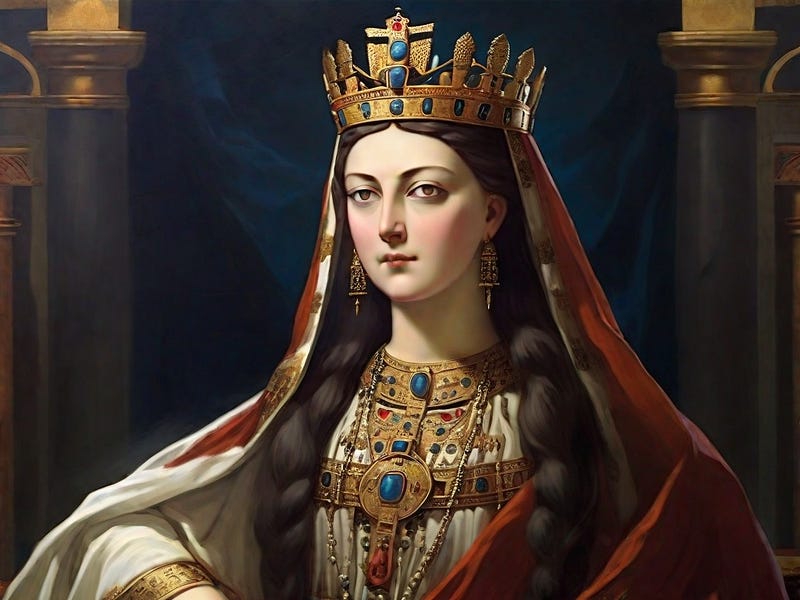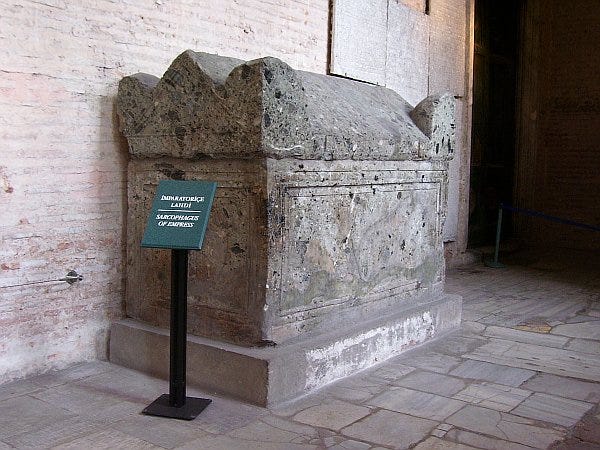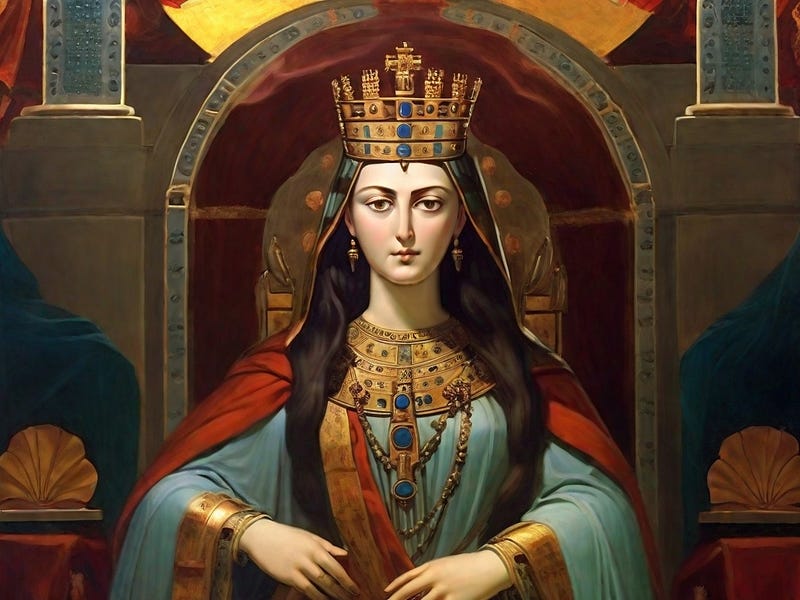The Ambitious Legacy of Empress Irene: A Byzantine Narrative
Written on
Chapter 1: The Rise of Empress Irene
During the era of Charlemagne, history saw the emergence of the first female ruler of the Roman Empire—Empress Irene. Known for her ambition and ruthlessness, Irene was considered by Charlemagne as a prospective bride to unify the Eastern and Western Empires.

The Byzantine Empire, the successor of the Roman Empire, faced significant challenges in the 8th century, with the Arab states gaining power and internal doctrinal disputes brewing among Christians. This period also witnessed the rise of the iconoclastic movement, which opposed the veneration of religious images.
Amidst this chaos, a girl named Irene, born into a prosperous Athenian family, was selected to marry the emperor’s son. Little did anyone know, she would dramatically alter the course of European history.
Section 1.1: Irene of Athens — The Future Empress
Irene was born into a well-known yet not particularly influential Athenian family. Emperor Constantine V likely chose her for her family's iconoclastic beliefs when he arranged her marriage to his son, Leo IV.
At around 14 or 15, Irene arrived in Constantinople, where she was received with grandeur. The preparations for her wedding to the 19-year-old Leo IV took over a year, culminating in their marriage in 769 AD. Their only son, Constantine Porphyrogenitus, was born two years later.
After the death of Constantine V, Irene ascended to the position of empress alongside her husband. During this period, she arranged for a marriage alliance with the Bulgarian ruler, who lacked true authority. It remains uncertain if Irene secretly supported the veneration of icons, as her husband’s views on iconoclasm were less extreme than his father’s.
Their marital relationship is debated among historians; some chroniclers suggest they were harmonious, while others disagree. Notably, Irene did not have any more children after her son’s birth, coinciding with a decrease in the persecution of icon worshippers, highlighting her significant influence over Leo IV’s policies.

Section 1.2: Irene — The Regent Empress
In 780 AD, the unexpected death of Leo IV, who had struggled with anemia, altered Irene's role significantly as she became regent due to her son’s minority. Facing threats from her deceased husband’s brothers who sought power, Irene skillfully navigated the political landscape, exiling them once more.
For the next decade, she governed alongside Patriarch Paul, nurturing her son as a future ruler while aiming to preserve her own influence. During this time, she sought to maintain peaceful relations with the rising Carolingian Empire in Western Europe, even proposing a marriage alliance between her son and Charlemagne’s daughter, though she later withdrew from this arrangement.
As Irene consolidated her power, she began to remove individuals from her court who fell out of favor. She openly supported the icon cult and, despite opposition during the Council of Constantinople in 786 AD, managed to convene another council in Nicaea in 787 AD, which officially reinstated the veneration of icons.
In a bid to secure a marriage for her son, Constantine was wed to Princess Maria of Amnia. However, he was dissatisfied with his mother’s authoritative decisions, preferring a match with Charlemagne’s daughter. Irene, meanwhile, shifted her focus towards reconciling with the Lombards, opponents of the Carolingians.
Chapter 2: The Struggles for Power
Empress Irene: The Byzantine Trailblazer
This video explores the remarkable life of Empress Irene, her rise to power, and her enduring legacy in Byzantine history.
In 790, a conspiracy led to a power shift that resulted in Irene losing her influence, and Constantine VI became the sole ruler. Tensions flared between mother and son, culminating in Constantine ordering the punishment of Irene’s closest allies. In retaliation, Irene sought to regain her power by arresting those loyal to him.
Despite the initial success of Constantine VI’s reign, dissatisfaction grew, with both Irene and his own supporters urging him to reinstate her authority. In 792, she was allowed to reclaim her position, but conflicts continued to mount, particularly as Constantine's marriage to Irene's attendant, Theodote, added tension.
Byzantine Empire and the Rise of Empress Irene
This video delves into the dynamics of the Byzantine Empire during Empress Irene's rule, highlighting her impact on political and religious life.
As the years progressed, the emperor's faction weakened, and fearing a conspiracy, Constantine fled the city, only to be captured. Determined to solidify her power, Irene ordered her son to be blinded, an unprecedented act for a woman commanding an emperor.

Section 2.1: Empress Irene — The First Female Ruler
In 797, Irene declared herself “basileus,” marking her as the first woman to hold the Byzantine throne. She aimed to stabilize the realm, dispatching envoys to the Arabs and Franks to announce her ascension and desire for peace.
To win the favor of the Byzantine populace, she reduced taxes in the capital. However, her rise as a female ruler in a Christian Europe was met with skepticism and resistance. In a surprising turn, Pope Leo III crowned Charlemagne as Roman Emperor in 800, believing the throne was vacant and seeking to protect Rome from the Lombards.

Charlemagne's coronation sent ripples throughout Europe, with the Byzantines viewing him as a usurper. As he sought to exert authority over the papacy, the court in Constantinople rejected any marriage proposals from the newly crowned emperor. Nonetheless, Charlemagne saw the potential for reunifying the fractured Roman Empire through marriage.
For two years, Irene struggled to secure vital alliances, but her failure to name an heir ultimately led to her downfall. The usurper Nikephoros exploited this weakness, leading to Irene's exile in 802. The animosity from the court stemmed from speculation that she had entertained the idea of marrying Charlemagne.
In her final years, Irene resided largely on the island of Lesbos, reportedly reflecting on her tumultuous past.
Attention all readers!
As content creators on Medium.com, we receive minimal compensation for our hard work. If you find value in my articles, please consider supporting me on my “Buy Me a Coffee” page. Your small contributions can significantly impact my ability to create quality content. Thank you for your support!

